How to Create an Application Modernization Strategy
Ditstek Blogs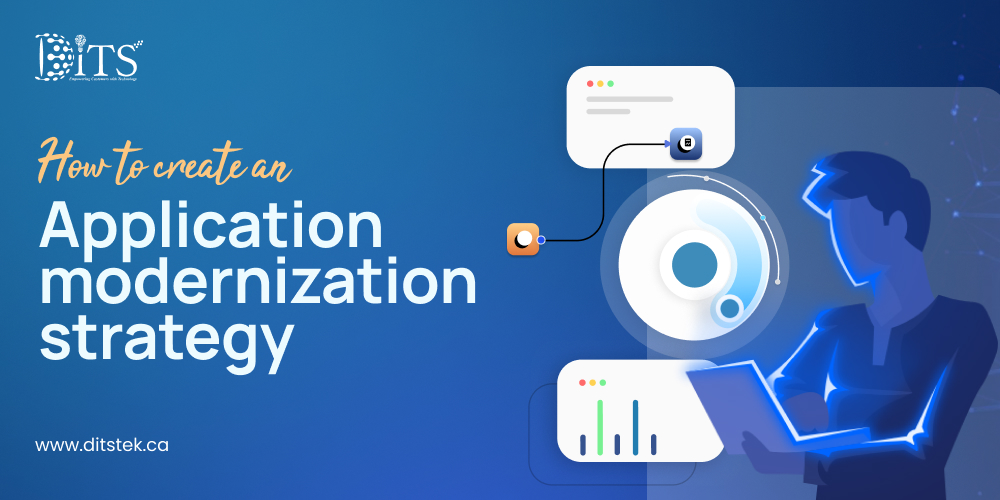
Updating an existing database is a priority for every business that operates in a tech environment. Legacy code refers to the business's digital transformation, maintenance, and scaling of its applications. Old legacy systems that cannot connect with new cloud-based applications limit an organization's flexibility and scalability, potentially exposing it to security risks.
Moreover, it may be challenging for an organization to analyze its business data and gain insights for creating effective strategies. This is where a comprehensive application modernization roadmap can help. Here are some thoughts on this.
An ongoing application modernization process is crucial for operating a sustainable digital organization in a tech environment. Understanding the benefits of application modernization is essential, but ensuring a strategic approach is equally important.
Future-Proof Your Apps with DITS Experts!
Outdated systems holding you back? Let us revamp your legacy stack into a fast, flexible, cloud-ready solution.
Who Needs Application Modernization?
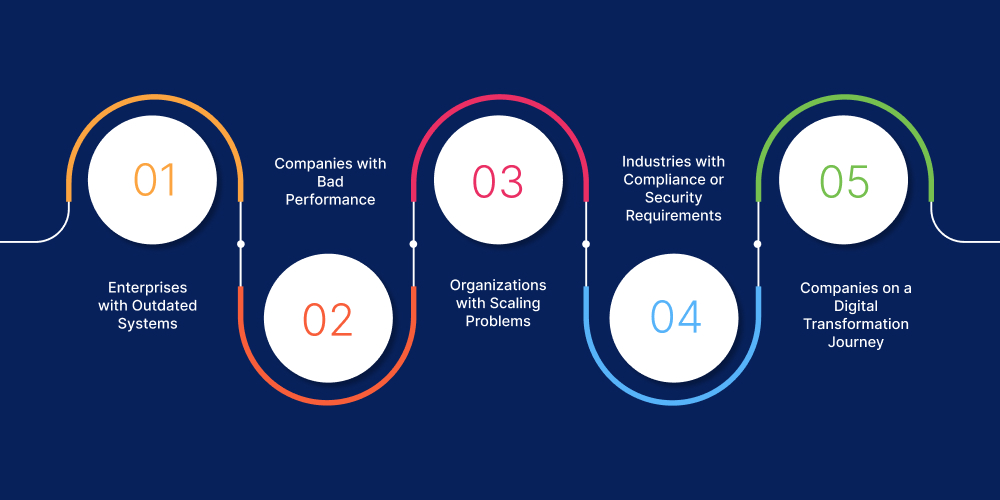
Not every business needs application modernization. Those with legacy systems, outdated software, scaling problems, and companies that prefer to increase their digital capabilities undergo application modernization. Here are some examples of businesses that need this transformation.
Enterprises with Outdated Systems
Companies that are still using complicated legacy solutions that are challenging to maintain, update, and integrate into modern environments.
Companies with Bad Performance
Applications that are slow, unstable, and unable to handle the proper number of users simultaneously provide a poor user experience.
Organizations with Scaling Problems
Systems that are not scalable to meet the demands of a growing business, increasing user traffic, or larger data volumes limit the company's business potential.
Industries with Security Requirements
Companies in regulated industries such as finance, healthcare, or government that want to meet changing compliance and security regulations.
Companies on a Digital Transformation Journey
Businesses that are looking for innovation, migrating to cloud-native applications, or looking to increase their ability and speed using innovative technologies like artificial intelligence and predictive analytics.
Steps for Application Modernization Strategy
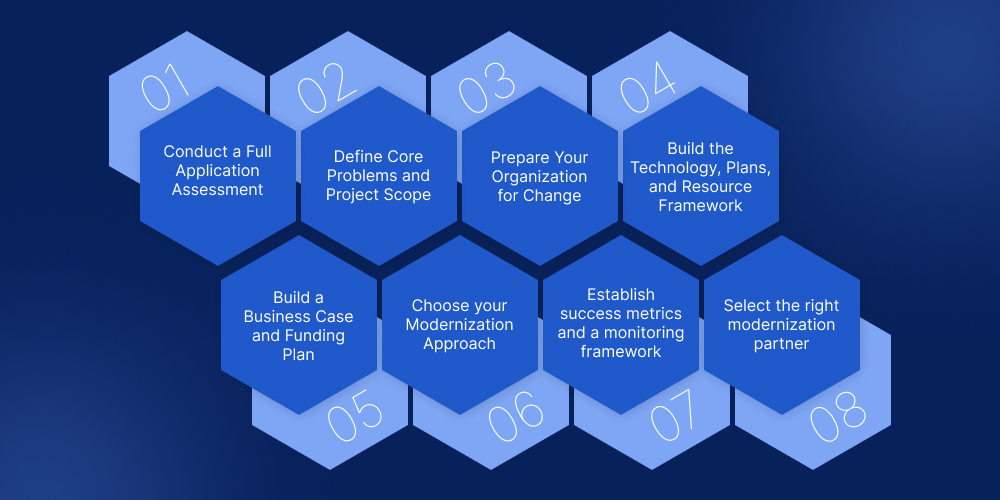
Identifying that you need to modernize applications is only the first step. Transforming outdated applications into more scalable, future-ready applications will require a structured, business-led initiative. The following outlines the most critical steps that every organization needs to consider when creating and strategizing an effective modernization program.
1. Conduct a Full Application Assessment
Begin by reviewing your complete application portfolio to assess which application systems require modernization. Which systems are old, are too difficult to maintain, or don't fit into your business strategy anymore? Some questions to consider:
- What is working, and what isn't?
- Which applications directly affect your customers' experiences?
- Are there any security or compliance holes?
- Which systems are business-critical (versus) redundant?
Apply user feedback, internal analytics, and industry standards to your review. Ensure you consider performance issues, integration issues, and the subsequent end-of-life of any technologies.
2. Define Core Problems and Project Scope
Understanding the problem is essential to modernizing an application, whether the issue is poor performance, expensive maintenance, or problems once thought to be up-to-date or scalable.
Define a clear project scope by identifying your target systems, dependencies, and the specific functionality that needs improvement. Your internal team needs to record the project scope and communicate it to all stakeholders to facilitate effective planning, execution, and risk management.
If you don’t have an internal team, DITS is there to conduct a complete assessment of your application and systems. We will also identify the project scope and requirements, and create a comprehensive plan for application modernization.
3. Prepare Your Organization for Change
Modernization will introduce new technologies, processes, and workflows. If we don't manage the process, we may create significant disruptions as people adopt new working machines. Here are some ways to minimize resistance and make things easier:
- Providing hands-on training and documentation
- Timing the deployment to minimize the disruption
- Creating a communication plan that is open and transparent
- Engaging end-users early in the process to provide input and a framework for user feedback.
An organizational readiness plan will ensure your workforce is aligned with the transformation.
4. Build the Technology, Plans, and Resource Framework
Develop an understanding of the technology, tools, platforms, and infrastructure that will support your modernization objectives. For example:
- Cloud providers and environments (AWS, Azure, GCP)
- Development frameworks and automation tools
- CI/CD (Continuous Integration/Continuous Deployment) pipelines and DevOps frameworks
- Containerization and microservices architecture
Map out your internal vs external resource requirements and ensure compatibility with existing systems. You should lay out a well-defined technology roadmap to navigate the implementation.
5. Build a Business Case and Funding Plan
The business case will help you convince senior-level stakeholders to support it. Clearly define the value of modernization to your organization, considering:
- Operational efficiencies and cost savings
- Reduced time to market
- Improved customer experience
- Competitive differentiation
Include an ROI estimate, and consider the factors that contribute to costs. Modernization will be a long-term investment and may not follow the conventional IT budgeting cycle.
6. Choose your Modernization Approach
The modernization approach you choose depends on the complexity and condition of each application. Some standard methods include:
- Rehosting (Lift and Shift): A simple process to migrate over to the cloud, with little, if any, code modification.
- Refactoring: Modifying decisions for specific components or features to make optimizations.
- Rearchitecting: Changing architecture decisions to allow for a scalable/co-existence platform and cloud-native patterns of implementation.
- Rebuilding: Rewriting an application from scratch using newer technology.
Each approach mentioned here has pros and cons. Use your best judgment to pick the approach that is the most realistic and feasible for your resources and goals. Additionally, consider whether you want to automate your systems or applications using artificial intelligence (AI) technology.
7. Establish success metrics and a monitoring framework
KPIs will help you define and measure success when you modernize your application. Metrics can include:
- Performance metrics of the application
- Reduction in infrastructure costs
- Speed of deployments
- User utilization, satisfaction, and scores
It is also beneficial to establish a real-time monitoring and feedback loop to promote iterative improvement and prevent the reaccumulation of technical debt.
8. Select the right modernization partner
Although you may have an internal team that drives vision and leadership, a technology partner will bring deep domain expertise, proven frameworks, and implementation experience. Partners are advocates for customers and, when chosen well, can help you:
- Prioritize future modernization work
- Shorten the transformation timeline
- Identify and reduce risk and disruption
Do diligence; study case studies, certifications, and technology capabilities before signing a partner. DITS a Canada-based software development company, can help you create an effective modernization strategy to modernize all your applications to work with the latest technologies and upgrades.
Speed Up Your Time-to-Market with Smart Modernization!
We help you deliver features faster, innovate quicker, and respond to change without downtime or tech headaches.
Benefits of Application Modernization
Modernizing legacy applications reinvigorates aging applications. Modernization typically occurs within the broader context of an enterprise digital transformation strategy; however, it still aims to address operational inefficiencies and optimize business processes. Here are some of the advantages of modernizing legacy applications:
- A more efficient infrastructure and consumption-based pricing enable significant potential cost savings over time.
- Improvements in uptime and performance mean applications can achieve more while consuming the same levels of resources.
- Refactoring a database from an older technology to a more modern experience can help reduce performance overhead and open new capabilities.
- Orchestration and containerization technologies, such as Docker and Kubernetes, enable organizations to create and destroy containers as needed.
- Replatforming legacy applications to new infrastructure enables data-to-decisions analytics, as well as automation of workflows, and reduces lower-level administrative workloads.
How DITS can help you modernize your Applications?
DITS is an offshore software development company based in Canada, offering software solutions and legacy modernization services to organizations. At DITS, we specialize in helping enterprises modernize their legacy applications with customized solutions tailored to their operational needs. We help you rehost, refactor, or completely rearchitect some or all of your systems. Our software development team has expertise in cloud platforms, microservices, containerization, and DevOps processes.
We first focus on understanding your business objectives and current technical environment, then develop a modernization roadmap that is aligned with your priorities and specific needs. Our development team works collaboratively with your internal team and focus on areas such as performance improvements, cloud migration with minimal disruption, enhanced security, and scalability.
We ensure your applications are ready for the future and deliver the required value to your organization. You can visit our website or click the button below to fill out the form, and our team will respond to you shortly.
Transform Legacy Code Into Scalable Innovation!
We rebuild aging software with modern architectures that grow with your business and adapt to market shifts.
Conclusion
An effective application modernization strategy involves much more than simply upgrading technology; it involves a clear vision of where you want to be, deliberate planning, alignment with business goals, and awareness of the challenges ahead.
Each component plays a vital role in establishing a foundation for success, whether its about evaluating legacy systems, planning a modernization strategy, or preparing teams for the future. By considering performance and scalability, organizations can achieve greater value, enhance user experiences, and position themselves to respond to industry transformations.
Are you ready to modernize your applications with confidence? Collaborate with DITS to modernize your legacy applications into high-performance, adaptable assets that continue to drive the sustained growth of your business.
FAQs
1. What is application modernization?
Application modernization is the process of adapting and updating outdated systems to align with current business needs and technologies. Modernization could mean re-hosting, refactoring, re-architecting, or even rebuilding the application in question. Hopefully, these changes will enable increased scalability, performance, security, and integration capabilities, while continuing to reduce operational costs and technical debt.
2. Why is an application modernization strategy important?
A modernization strategy will keep organizations from experiencing disruption, will help control costs, implement modern business objectives more successfully and ensure the modernization process is linked to performance, scalability, and user experience goals, while ensuring risks are mitigated through planning, prioritization, and execution.
3. What are the typical methods for modernizing applications?
Several typical methods fall under colocation (or lift-and-shift), refactoring (code optimization), re-architecting (changing the application architecture), rebuilding (building from scratch), and replacement with commercial off-the-shelf (COTS) solutions. The right solution will depend on the complexity of the application and the business goals you have to achieve.
4. How do I know if I need to modernize my application?
You can consider modernizing your application when it is built on an outdated technology stack, if you are experiencing performance issues, if it is difficult to maintain (you need to purchase new hardware), there are insufficient capabilities for integration, or if it potentially poses a security risk. Increasing operational costs, poor user experiences, compliance issues, or risks of abandonment are also good indicators that modernization may be needed.
5. How long does application modernization take?
The time required to modernize will depend on the size and complexity of the application, the chosen option, and the available resources. Small rehosting projects can take a couple of weeks, while a full re-architect or a rebuild may take months. A phased approach will help mitigate time and risk.
6. How can DITS help with application modernization?
DITS offers a comprehensive range of application modernization services tailored to your business objectives. From assessment and planning to cloud migration and performance optimization, with our proven frameworks and technologies, we provide to the modern digital world with your legacy approaches with agile, scalable, and secure digital solutions so that you can maximize value while minimizing disruption.

Dinesh Thakur
21+ years of IT software development experience in different domains like Business Automation, Healthcare, Retail, Workflow automation, Transportation and logistics, Compliance, Risk Mitigation, POS, etc. Hands-on experience in dealing with overseas clients and providing them with an apt solution to their business needs.
Recent Posts
Get in touch


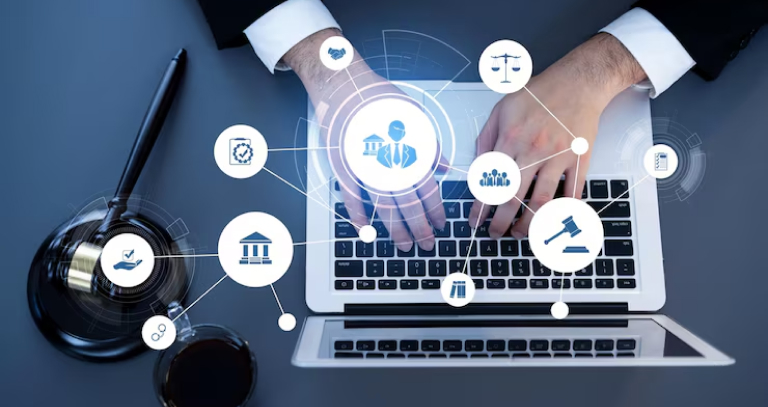
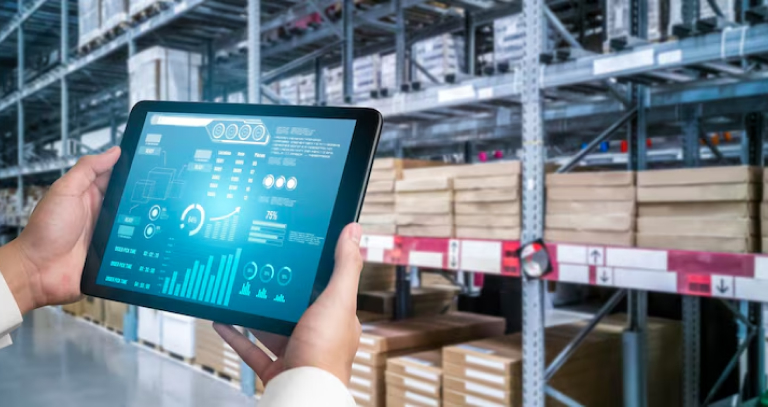

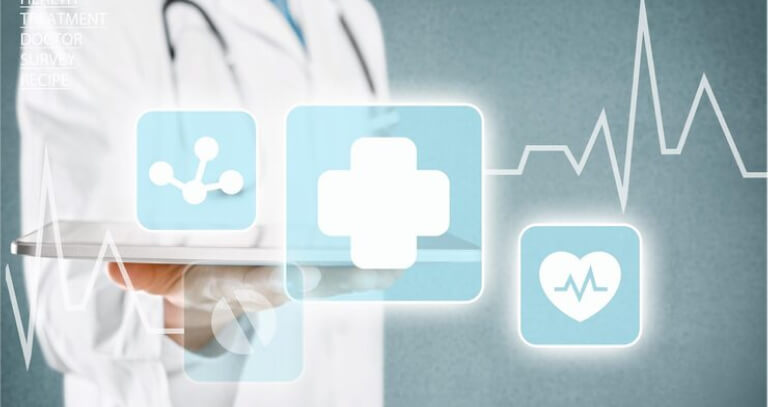

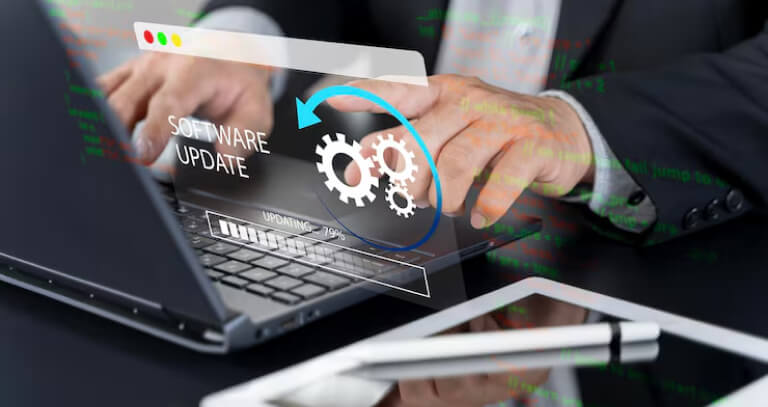
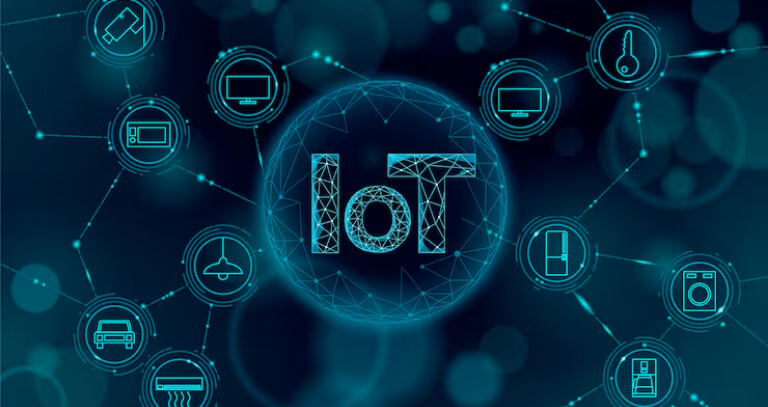


 Calgary | Edmonton | Vancouver | Toronto
Calgary | Edmonton | Vancouver | Toronto